11 June 2024
![]() 7 mins Read
7 mins Read
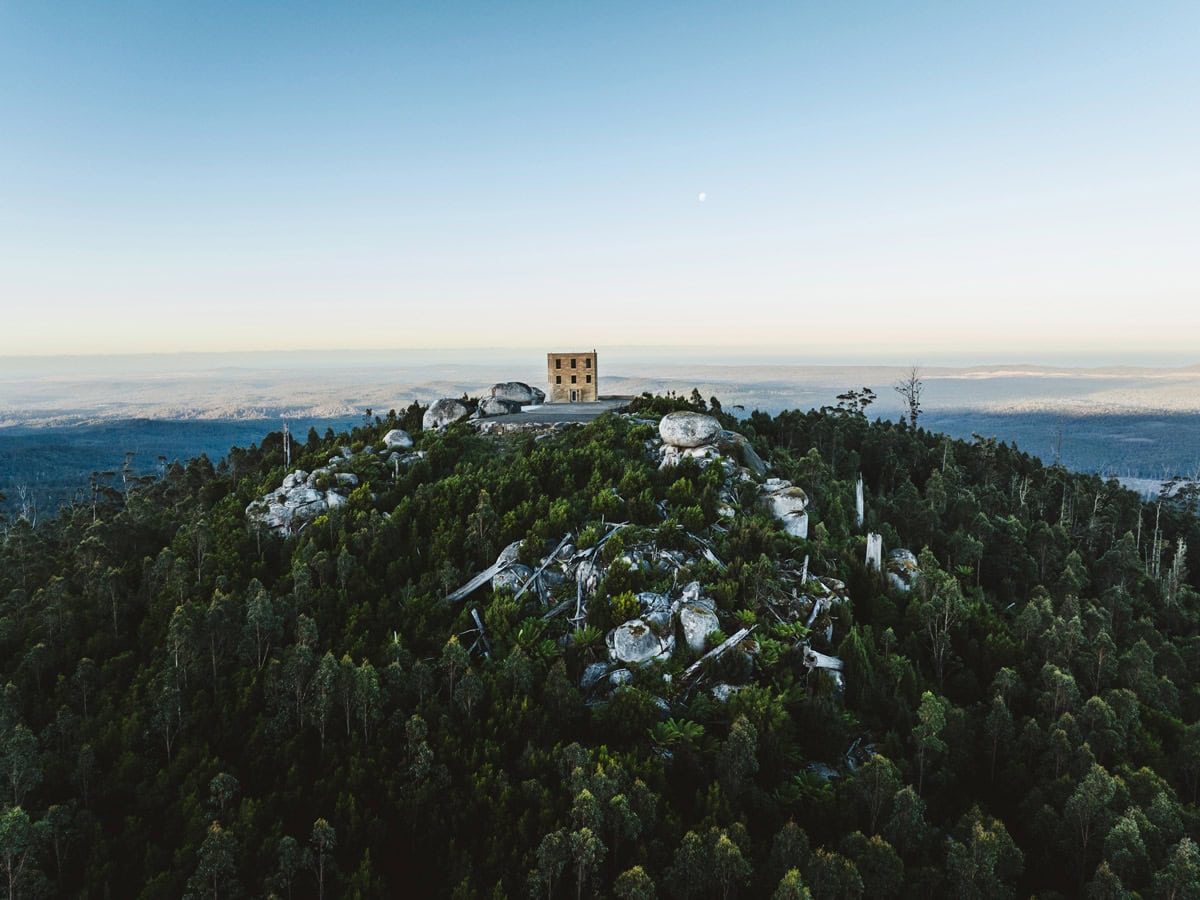
If accommodation with a splash of Tasmanian noir and a dash of edge-of-the-world remoteness is what you crave, look no further than these five stays. Each brings a unique take on getting guests disconnected from daily life and in sync with nature instead. Easily spooked? Bring a partner or pal.
The Keep in Tasmania/lutruwita’s north east ticks all of the remote accommodation boxes – and then some. It begins with the drive. As the nearest tiny town of Pioneer fades in the rear-view mirror, the dirt roads get increasingly narrow, and wombats lumber obliviously from the bush.
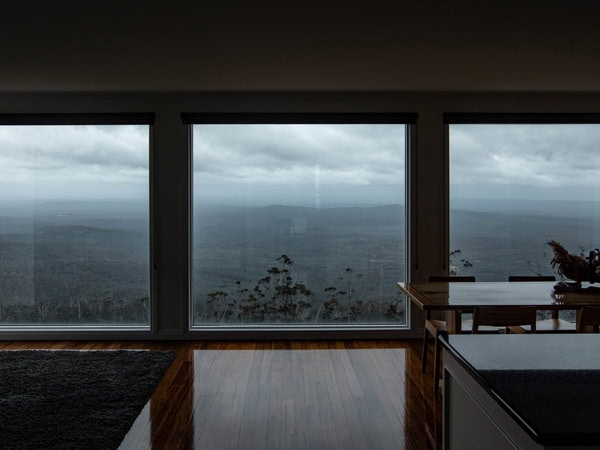
The Keep ticks all of the remote accommodation boxes. (Image: Christian Watson)
Few, if any, people come down these old logging roads. An iron gate five kilometres from the accommodation is extra assurance you won’t see another human (unless a private chef or helicopter trip has been arranged).
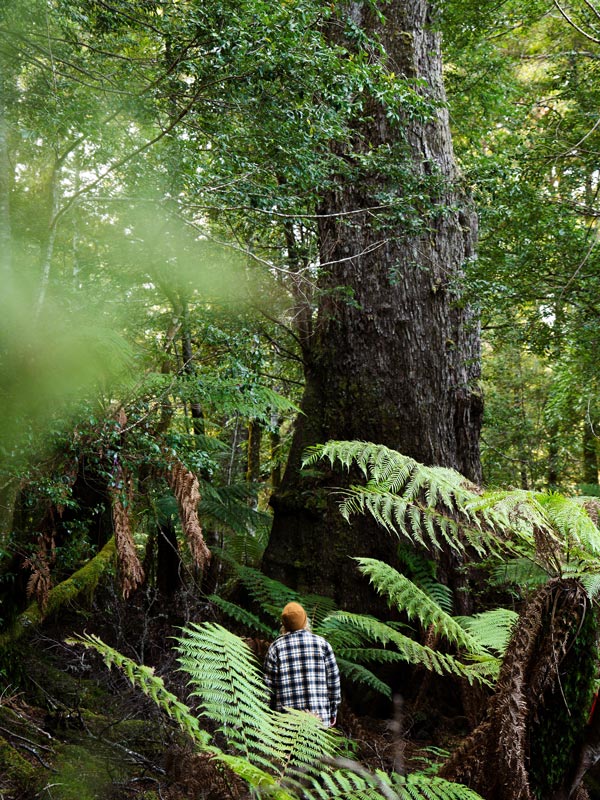
The property’s bushwalks showcase lush man-ferns. (Image: Roz & Loz)
Shortly before arrival the road inclines steeply above the tree line and The Keep looms into view. Built on a stony 650-metre pinnacle in the style of the towers favoured by European nobility during the Middle Ages as lookouts for invaders, the building has 360-degree views of the Bay of Fires and Flinders Island. The property’s 101 hectares of private reserve is set within a much larger sea of trees, so the solitude and silence are overwhelming.
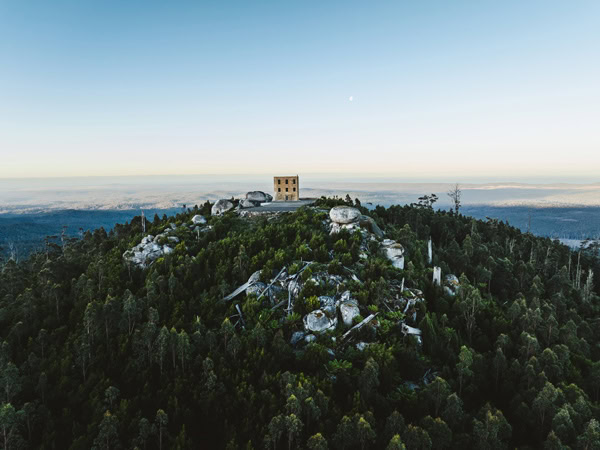
You won’t forget the moment you see The Keep pop into view. (Image: Stu Gibson)
The Keep is kitted out with vinyl records, a bijou reading room, Tasmanian noir artworks, eight ways to make coffee and a sleek mid-century bar with a bottle of Lark whisky. In the fridge is local wine, beer, a selection of vintage French Champagne and high-quality breakfast provisions.

Listen to vinyl by the fireplace. (Image: Ben Little)
Nestled among dramatic granite boulders, an outdoor bath offers panoramic views, while the property’s bushwalks showcase lush man-ferns, Tasmania’s oldest Myrtle Beech tree and some rather startled pademelons.
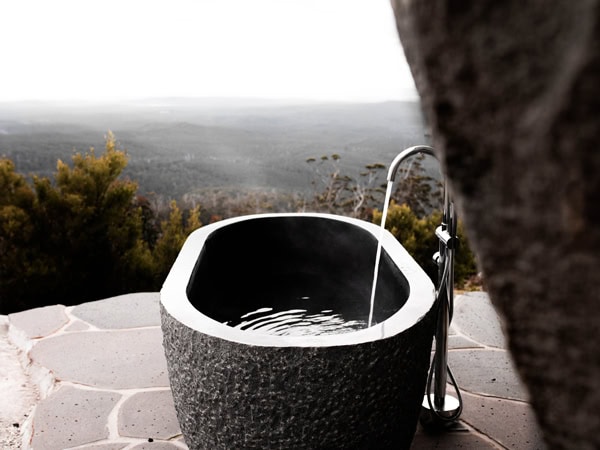
An outdoor bath offers panoramic views. (Image: Rachel Vasicek)
The Keep is targeted at couples with no kids or pets in tow. Solo travellers should bring a pal (who they’re comfortable sharing a King bed with) because going alone may be too ‘Capital A’ alone for some. Avoid driving at dawn, dusk or at night when wildlife is on the move.
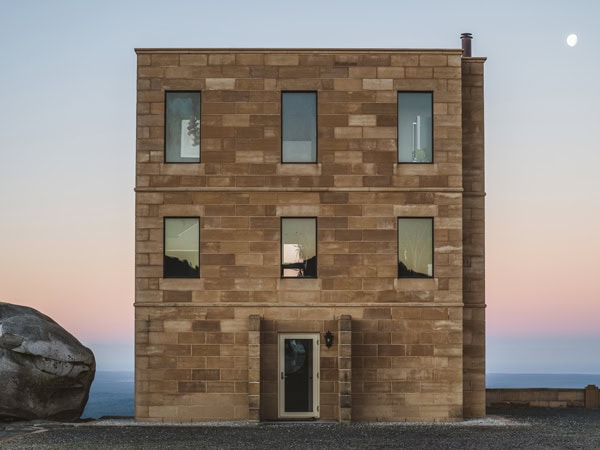
The Keep is targeted at couples with no kids or pets in tow. (Image: Stu Gibson)
Because Corinna offers several cottages, campsites and a pub, you may forget you’re in the middle of one of only three cool temperate rainforests globally: takayna/The Tarkine. This wilderness is half the size of Lebanon and is where the survival competition series Alone Australia (Season 1) was filmed. The nearest town of Waratah is an hour-plus drive down an unsealed road. The west coast town of Strahan, meanwhile, is 60 kilometres south.
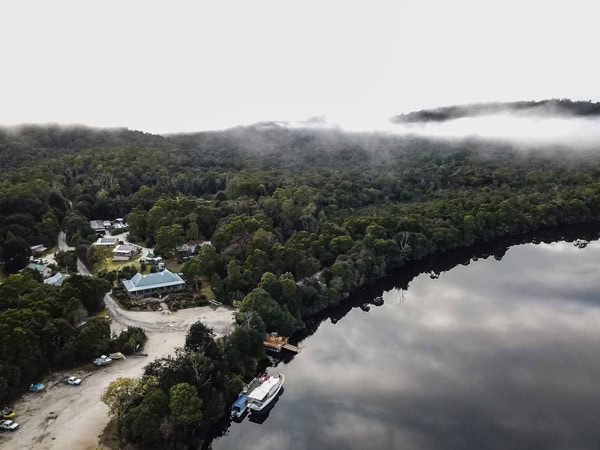
Stay in the middle of a cool temperate rainforest. (Image: Chris Crerar)
Corinna was established in the 1890s on the traditional land of the Petaanidik peoples as a township for “miners and piners”. These days, it’s a rustic and convivial place to meet fellow travellers though the frontier look and feel remains strong.
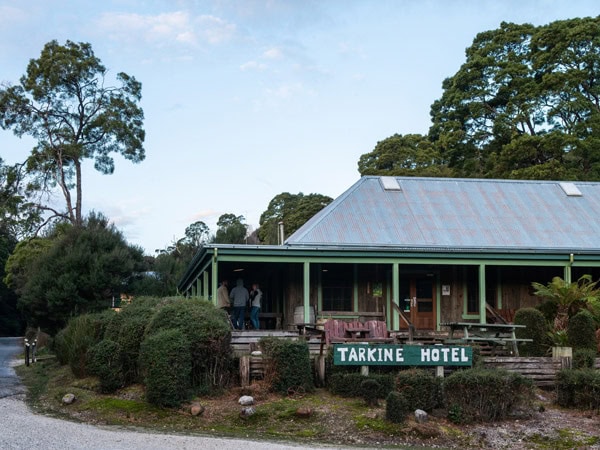
The Tarkine Hotel is tucked within a remote and rugged landscape. (Image: Chris Crerar)
Several hikes leave from Corinna’s grounds. The Whyte River loop is both enchanting and easy, while the longer and harder Mt Donaldson trail is a short drive away. On clear days, rented kayaks can be paddled on the tannin-stained Pieman River (keep an eye out for platypus or sea eagles.) Cabins are equipped to prepare simple meals, but most guests congregate on the Tarkine Hotel for pub grub.
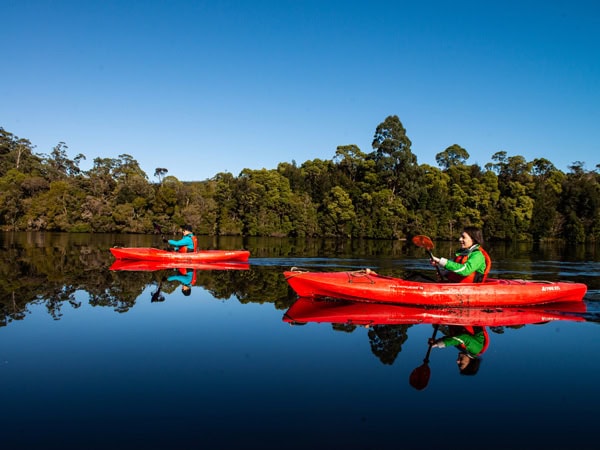
Go kayaking along the Pieman River. (Image: Chris Crerar)
Tree lovers will spy Huon pine, myrtle beech, sassafras and leatherwood trees in the misty, mossy, luminously green rainforest. Autumn is fungi season when The Tarkine’s multicoloured mushrooms are a highlight. Tasmanian devils and spotted-tailed quolls can be seen, and the cool damp environment is also home to invertebrates such as large Land Snails, Walking Worms and the world’s largest freshwater invertebrate, the Giant Tasmanian Freshwater Crayfish.
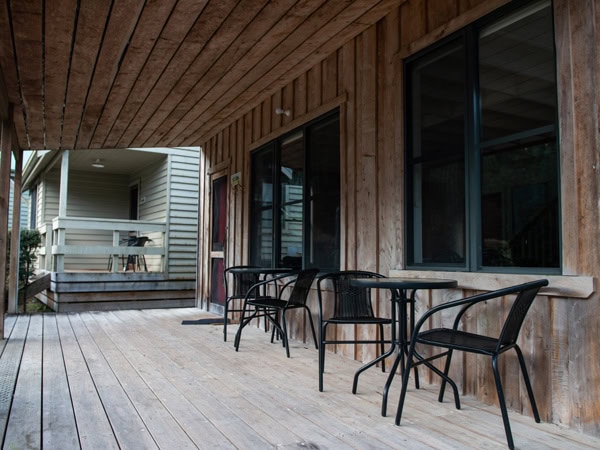
Corinna offers several cottages, campsites and a pub. (Image: Chris Crerar)
At the tippy top of a 275-metre jetty on leeawuleena/Lake St Clair is the five-storey, adults-only guest house, Pumphouse Point. Completed in 1940 as a pumphouse for Tasmania’s Hydro-Electric Commission, it is particularly photogenic at night when illuminated by red lights. Sleeping on the lake with crows cawing by is an experience of pure Tasmanian noir.
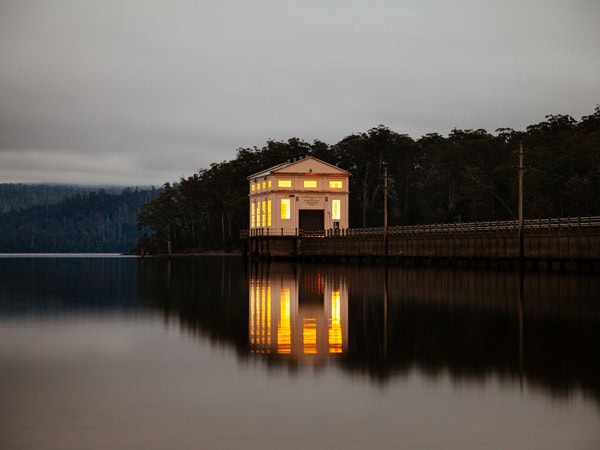
Pumphouse Point sits on leeawuleena/Lake St Clair. (Image: Adam Gibson)
Based at the southern end of Cradle Mountain-Lake St Clair National Park, this is a walkers’ wonderland with 100 kilometres of tracks, including the magical Overland Track. If it’s not great weather for an intrepid walk, e-bikes, rowboats, books and board games will keep you entertained.

Take in dramatic views of Cradle Mountain-Lake St Clair National Park. (Image: Adam Gibson)
While larders and honesty bars are provided, room rates include breakfasts and dinners in the Shorehouse restaurant, with set menus featuring seasonal ingredients. Don’t miss a lakeside stroll for driftwood spotting.
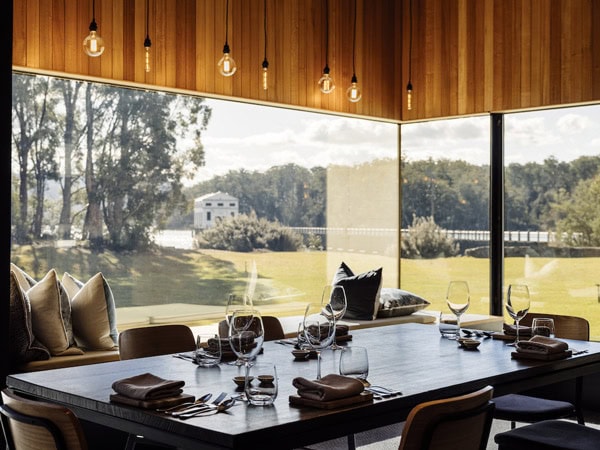
Room rates include breakfasts and dinners in the Shorehouse restaurant. (Image: Adam Gibson)
The Southwest National Park is Tasmania’s largest expanse of wilderness and perhaps its most fearsomely inaccessible of all. This is why On Board‘s expedition vessel, Odalisque III, is such a treat.

Hop onboard Odalisque III. (Image: Lean Timms)
With a passenger list capped at 12, founder and skipper Pieter van der Woude sails nature lovers to parts of the national park network that are otherwise impossible to access.

Sail to parts of the national park that are otherwise impossible to access. (Image: Jason Charles Hill)
On Board’s signature experience is a five-day journey around Port Davey. This area has three hats: a national park, a protected marine park and a UNESCO Tasmanian Wilderness World Heritage Area.

Nature lovers can join a five-day journey around Port Davey.
Guests can choose walking-oriented trips (think rainforests, button grass plains and quartzite mountain peaks), wellness journeys (journalling and cold plunging), or dedicated photography expeditions. Back onboard, food miles are minimised, and local materials and makers are featured.
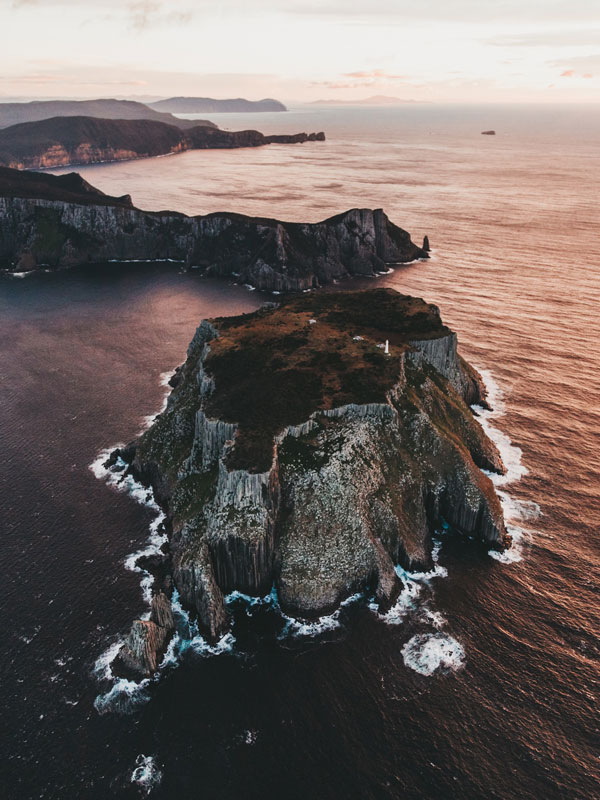
Guest can choose a range of different trips. (Image: Jarrad Seng)
Your destination is an island off an island off an island. And once there you (and up to eight companions) will have it all to yourself. The best way to reach the end-of-the-world beauty of Satellite Island is from Hobart via Bruny Island. Stock up on provisions on Bruny and maybe you’ll get to supplement them with wild-caught oysters or abalone plucked from the water close to your bed.
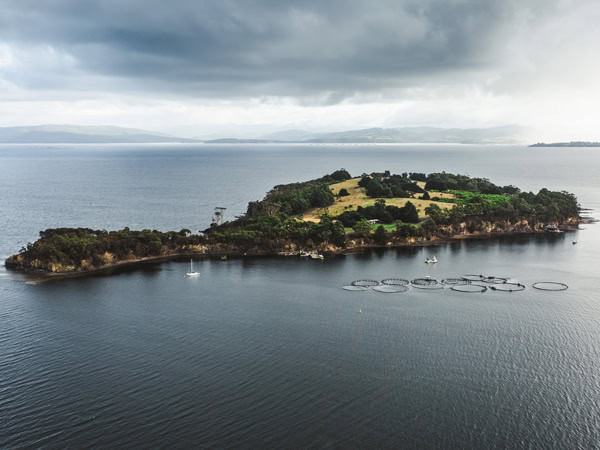
Satellite Island is a whale-shaped landmass off Bruny Island. (Image: Adam Gibson)
The two bedrooms in The Boathouse were once salmon feed sheds. The original roller doors remain, so the stars and sunrise are viewable while horizontal. Up a cliff-face stairway is the three-bedroom Summer House.
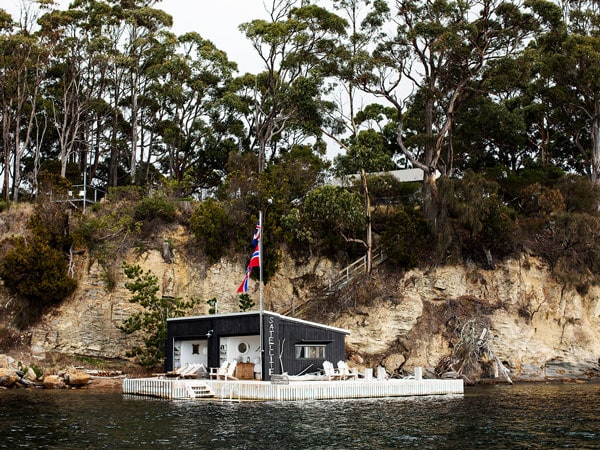
The Boathouse is a quirky stay. (Image: Kara Rosenlund)
There, guests will also find chickens for fresh eggs, an open fireplace, a stone fruit orchard, a garden full of fragrant herbs and, best of all, a Japanese onsen-style bath that fills with ocean water heated to 38 degrees.
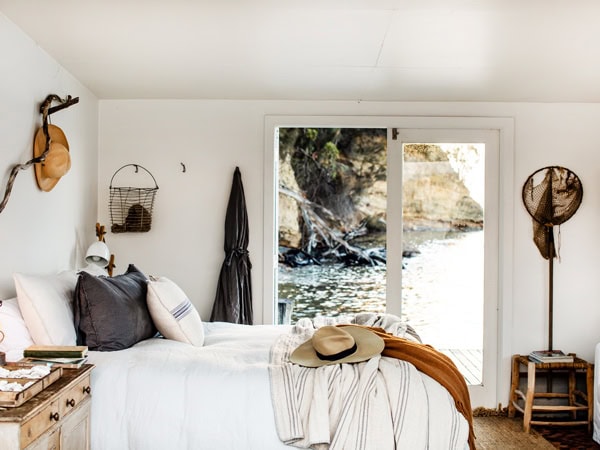
Wake up to stunning water views. (Image: Kara Rosenlund)
So much, or so little, can be done on Satellite Island. At low tide, you can walk the 30-hectare island on foot to see the ancient fossils in the rock shelf or circumnavigate it by kayak. Sunsets are wonderful at Last Glimpse Point with nothing between you and Antarctica.

Settle into a remote but luxe island abode. (Image: Luisa Brimble)
Sandy roams and beachcombs showcase hidden coves and shorelines clunking with glossy pebbles. Alternatively, walk the island’s interior to see native golden grasses rippling in the breeze. While tropical islands get all the glory, Tasmanian ones are better.
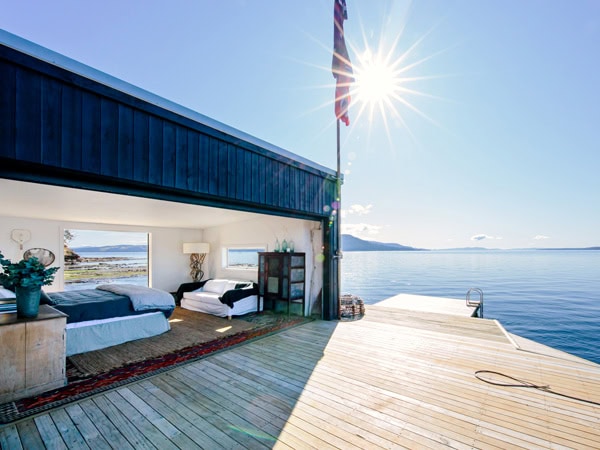
Escape to Satellite Island. (Image: Elise Hassey)
LEAVE YOUR COMMENT